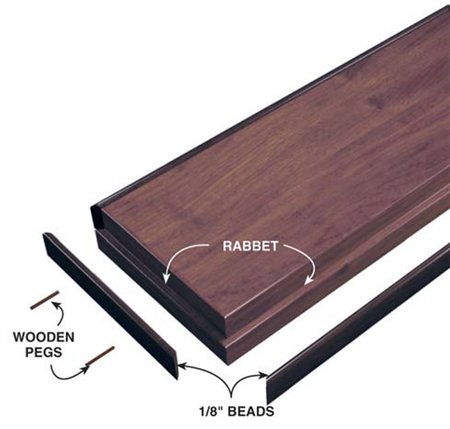We may receive a commission when you use our affiliate links. However, this does not impact our recommendations.
Q & A: Cock-Beading on Drawer Fronts
Q:
I have plans for a Queen Anne highboy
in which the drawer beads are
applied as separate strips to the edges of
the drawer front. How is this done without
creating a problem with cross grain
movement?
A:
Some techniques common to the
18th century, like cock-beading on
drawer fronts, seem daring or even reckless
to us today. But keep in mind that
18th-century furniture wasn’t built with
20th-century central heating in mind.
The dry air created by central heating
has ruined many a fine antique. But
take heart, if they could do it, you can do
it too!
Here are some things you can do to
minimize problems and still remain
true to the construction techniques of
the period: Select straight-grained wood
for the front, back and sides of your
drawers (look for rift to quartersawn
boards). The deepest drawers in your
highboy (7 in.) will exhibit negligible shrinkage in quarter- or rift sawn boards.
Finally, if possible, add some humidity
to the air where the piece will be displayed
during dry months.
Here’s how cock-beading was made
and applied in the 18th century, according
to Gene Landon who builds authentic
reproduction furniture in
Motoursville, Penn.: The bead itself
would have been made with a
3⁄16-in. side-bead plane and
then cut away to yield a 1⁄8-in.
bead. The rabbet in the
drawer front was cut with a
plow plane and finished with
a shoulder-side rabbet plane.
The bead was then mitered
to fit and glued onto the
drawer. The bead on the sides
of the drawer (where the end
grain to long grain problem arises) was also fastened with toothpick-
size wooden pegs. The pegs help to
reinforce what would otherwise be a
weak glue joint while allowing the
drawer side to be planed for final fitting.
|
This story originally appeared in American Woodworker October 1999, issue #75. |
Here are some supplies and tools we find essential in our everyday work around the shop. We may receive a commission from sales referred by our links; however, we have carefully selected these products for their usefulness and quality.










